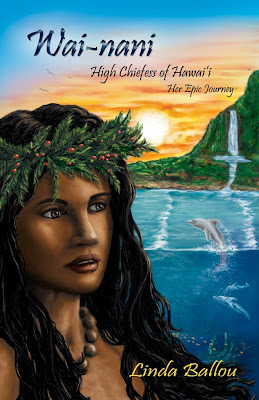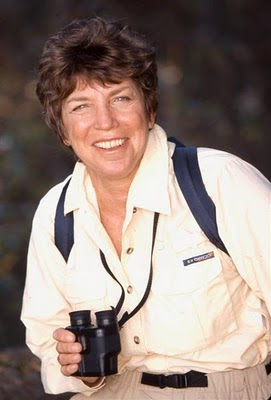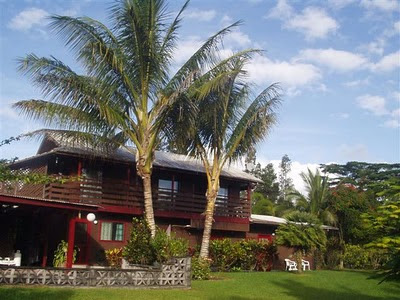
By Linda Ballou
Kumu Dane Kaohelani Silva is a transcendent figure (pictured here)who synthesizes Western and Hawaiian healing modalities into one holistic toolbox. Kumu Silva learned the arts of lomi-lomi massage and the use of native plants for medicines from his elders on the Big Island of Hawai’i. He also studied chiropractic, acupuncture, biomedical stress point therapy, chi gong and tai chi. He gives lectures on the subject of integrated healing at the college level in Hawaii and California. He also provides formal training in the field of therapeutic massage and offers healing tours on the Big Island.
Born with a gift of healing he feels he bears the responsibility to help others. People come to him with serious disorder and it is his job to discern the root of the problem. This could be spiritual, physical, and emotional. Once the problem is identified he determines the proper modality to treat the patient
In my research for my article Healing Hawaiian Holiday I had the extreme pleasure of interviewing Kumu Silva on his home turf in Hilo.
He requested we meet at Coconut Island where we sat on a wall overlooking azure water ruffled by a cooling sea breeze.
LB: You say you come from power of the place. Can you expand on that for me?
KDS: Real estate people have a phrase location, location, location.
This may be the wisdom of their indigenous roots speaking. A place of healing is a special place. This Island, Coconut Island (Moku Ola) is a “place of refuge” where spiritual healing and other forms of healing took place. The ancients chose this place for a reason. It’s because this place has more mana. So we are looking for places with mana, or spiritual power to activate the healing process. If we chose a place that has no mana, then there is no assistance from nature. We are working against the flow.
LB: What things do you do to encourage this assistance from nature?
KDS: In a place like this no need to do much. The main thing is to not bring bad energy to the place. Of course, when people come to this place for healing their thoughts, energies, and their bodies are not in harmony with nature or other people. They begin a process of reorganizing and reordering their thoughts and their feelings.
LB: Sounds to me like what the Navajo people strive for the state of Hozho. Are you familiar? It is the state of being in harmony, with nature, family and society?
KDS: Don’t know enough about it to agree or disagree. There are too many elements that may be present for me to say. We see that indigenous Native Americans and indigenous Polynesians share many things. That is not a secret and that is always a wonderful discovery we make as we come together as cultures.
LB: Do you travel around talking to other native peoples?
KDS: Yes, I do and I encourage them to come here. I went to Canada twice last year to speak to First Nation Peoples.
LB: I am from Southeast Alaska where the Tlingit Indians are indigenous. I do see commonalities, especially the idea of being connected to the land. That brings me to your nature walks. What do you do when you take people on a healing tour?
KDS: Every body is different and we alter our program accordingly. In general, what we find is that people come to us with memories of pain, and feelings of separation and helplessness about the future. We take those memories and release them into the environment. We invite the ancestral spirits with prayers and chants and offer them gifts to absorb the pain.
LB: The environment can handle it?
KDS: Yes, the environment can handle it, and this is one of the environments right here that we come to. You go to the gas station you get fuel. You have to go to a place in nature that has the same resonance and attunement for your work. This is a place of healing.
Ancients discovered it so we can automatically come here and use it for the same purpose.
LB: Do you believe that the ancestors are here to assist in this healing process.
KDS: They are not sitting around waiting for you, but you can call them. Part of the ceremony and process are chants that invite the ancestors. Ancestors receive their gifts in exchange for guidance and their presence
LB: I understand that hula is a form of meditation to pull mana. Do you do hula? Do you do it in a prayerful way?
KDS: I was a student of hula when I was a younger man. But, I also practice Hawaiian martial arts and healing arts and the martial arts describe my lifetime and my career at this time. Hula and martial arts are all part of the same family. The dances we enjoy today with beautiful girls covered with flowers are all part of a tradition of sacred practices.
LB: In tai chi there are certain movements to manipulate the energy.
How is it different?
KDS: In tai chi there are three points of energy. One is called “ching” which is centered around the reproductive organs. The second type is called “chi” which is located near the heart that is concerned with food and air. Ching becomes chi. when you are able to take the chi and increase it in volume you create something else that is more refined. That’s called “shen” or spirit. When we talk about energy we need to know what kind of energy. The energy we put into our car? The energy we put into our body? The Chinese ancients came up with three distinct types of energy. Here in Hawaii we talk about healing energy, “Ola” or the life force. This island is called Moku Ola—Island of life and of healing of energy.
LB: I do meditations. I do feel very strong energy near the ocean. The Islands have always been a source of solace and sustenance for me. So, I think I kind of understand what you are saying, although I don’t know the prayers and refinement that you give.
KDS: Hawaiians talk about HA. The breath that correspond to chi. Same kind of concept—energy of the breath ... the air. Mana is a higher form of energy!
LB: A higher form, in that it is a more spiritual refined energy?
KDS: Yes. So here we have a spectrum of energy. It is like light—the difference between a stone and light.
LB: Between coarse and delicate? You receive this energy? Do you direct this energy to people through touch or just mentally?
KDS: Both! We use prayer to help us guide the energy and we use touch.
But, we don’t always have to touch. We want to have a close relationship with the environment. Is it possible to change the clouds? Is it possible to make it rain? Is it possible to make the waves go up or down? These are things that don’t involved touching, but they do involve manipulating energy to result in an outward change.
When we are working with a human touching them is a very easy way to transfer energy, but it does not change their lifestyle.
LB: You are the most well respected and recognized lomi-lomi massage master on the Big Island. Tell me more about how you use the “Loving Touch” when you are working with people
KDS: It is a privilege and a challenge. We are honored to be able to touch people when we work with them in their goals. But, it also involves a large responsibility to educate the patient and guide them towards a healing lifestyle.
LB: You have workshops in Puna? What kinds of things do you do? What should people approach you for? What do want people to know that you do for them?
KDS: The needs of people are very different. They are physical, mental, emotional and spiritual. We are skilled in multiple modalities. We have a lot of experience in caring for people. If we can’t find the ability in ourselves to cure the patient we refer them to someone else
LB: You council the person and then send them the appropriate expert?
KDS: My martial arts master told me he had brain tumor. He asked was there anything I could offer him. I asked, “Have you seen anybody.”
Yes, I have seen everybody—chiropractor, acupuncturist, massage, medical doctors and healers,” he said.
He came to my class. I had the students help me lomi-lomi him. He fell asleep. When he woke up he could speak clearly, he could walk, he could see. These three things were impaired when he introduced himself. So, he said to me “I feel good. What do you recommend?” I said, call the doctor get some surgery and remove the tumor from your brain! He said, “Why do that when I can just come to you?” You’d be coming to me for the rest of your life. You have a tumor in your brain. Get it out! He went he got it out. He is good to go now. I work with doctors, other healers, all different cultures to identify the specific need for this person. We are healers. We look for the specific modality to employ to address the person’s specific needs. Lomi-lomi is a multiple modality. In the western view it is massage and body work. In the Hawaiian and Polynesian view it is holistic.
.JPG)
LB: Ten years ago, I was honored to receive lomi-lomi from Margaret Machado's niece. The thing that struck me, aside from the fact that it was deeply emotional experience, was that she started with a Christian blessing. The incorporation with Christianity with the traditional Hawaiian massage kind of threw me. My question to you is how much are you influenced by Christianity? Do you incorporate the Christian blessing in your healing?
KDS: I don’t think so. I don’t intentionally invoke Jesus in my work. I am trained as a Hawaiian kahuna and prefer to respect my ancestors through prayers and rituals. There are many Christians who combine Hawaiian kahuna methods in their traditional healing work.
LB: There are those people who blend the cultures?
KDS: Yes, many of them.
LB: So, are you a purist?
KDS: I think traditionalist is more appropriate.
LB: You are a chiropractor-No?
KDS: Yes, retired.
LB: Did you study on the mainland?
KDS: Both. Lomi-lomi has been around way longer than chiropractors.
Lomi-lomi technique includes bone-setting.
LB: I read that the ancients lomied-lomied the fingers of infants to make the tapered antennas for mana. Also, the forehead was slanted back for a regal profile?
Is that true?
KDS: When I was young my grandmother massaged my forehead. I do it with children as well.
LB: What is the purpose of this?
KDS: Because people, like myself, when they are growing, part of our skull grows very fast. It is to accommodate the growth of our brain.
Also it is to beautify the person.
This type of massage is different than the type used in healing. For example when my son was born my wife asked me to lomi him to increase the flexibility of his joints. So, other mommies have come to me for that as well. Working with children to make them more flexible is one of the goals. If you have someone who comes from a family where they might have some spinal issues the children will be massaged as a treatment to discourage those problems.
LB Do you use the pebble outline of a person’s body that I’ve read about to divine the source of the problem?
KDS: Those pebbles are used to teach people. Different colored stones pertain to bones, organs, lomi points, etc. Yes, i love to use stones.
Today we have more tools than just stones. We have books, internet, anatomical models, videos, everything.
LB: Do you use the native plants in your healings?
KDS: Yes. These medicines can help save lives, and save limbs.
LB: Do you use the universal remedy the sea-water cleanse offered at Margaret Maschedo’s retreat?
KDS: I work with people with diabetes, cancer, all kinds of problems.
There are many types of cleansing. Sea water is the simplest, cheapest, fastest, but it does not clean out the liver, it cleans out the colon. If you have someone who needs to clean out their liver, or their pancreas, or their kidneys sea water would probably not be the best for them. I have a group of students right now who started from day one with blocked colons; by day 3 none of them were constipated.
Teach them how to mix the salt water, massage their tummies and give them physical movements to do every day. It is a holistic approach.
In western understanding health care comes from the chiropractor, the doctors, the pharmacist, but in cultures like ours one person does many things and they employ many different modalities. The use of salt water is like brushing your teeth it is not a big deal. Ten days is just the beginning. Repeat it several times each year. Make it part of your lifestyle. That means when you go to the baby luau you have one serving.
Sea Water has 3.5 grams of salt…we dilute it so that it is about 1 gram of salt. You make it to the salinity of blood. Blood is .9 grams of salt. Sea water is alkaline ph 8. Our blood is ph 7.35. We get sick when our blood gets to acidic. Too much acid in your body causes weakness and pain. Cancer is inflammation. Inflammation causes mutations in the cell. This creates bad things—waste products, pain and disease
LB: You are very slender are you vegetarian?
KDS: No. I am “traditionalistarian." Eat simple, traditional meals.
You can have a taste of everything, just don’t eat too much!
LB: Do you do your therapy in the Ahalanui Hot Ponds in Puna?
KDS: Yes, I worked on three people there yesterday. There are natural places for healing located in power spots that are effective.
LB: What does “Huna”- the secret – mean to you?
KDS: Don’t think of the word Huna. Think of word kahuna. Huna is a collection of secrets thoughts and practices handed down by the kahuna. A kahuna is someone who is capable of doing things that other people cannot. I was raised that there was to be no babbling of secrets. The ancients could not find someone of sufficient character to be worthy of their secrets.
LB: What happened to the secrets?
KDS: They took them with them to the other side. Through meditation, prayer and rituals, we are able to receive their guidance and support.
LB: Thank you Kumu Dane Silva
If you would like to learn more about Kumu Dane Silva’s workshops and retreats go to:
Hawaiian Healing Center or Email:
kumulomi@gmail.comWeb-site:
http://www.haleola.com/***********
I walk in beauty of the good red road
Linda Ballou
http://www.lindaballouauthor.com/

 Wai-nani’s mythological journey that is woven throughout the actual historical events that led to Kamehameha’s rise to power is the bigger story.
Wai-nani’s mythological journey that is woven throughout the actual historical events that led to Kamehameha’s rise to power is the bigger story.








